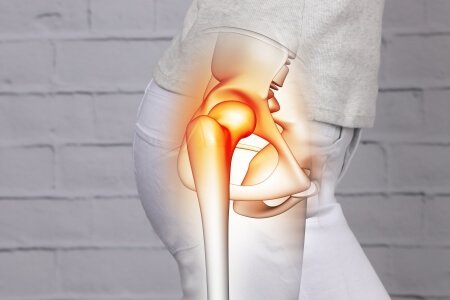Hip Osteonecrosis
Causes, Symptoms, Complications, Risk Factors, Preventions and Treatment
What would you like to know?
What is Hip Osteonecrosis?
Osteonecrosis of the hip is a condition that develops when the femoral head’s blood supply is disrupted. With inadequate blood supply and inadequate nourishment, the bone in the head of the femur dies and collapses gradually. As a result, the cartilage covering the hip bone collapses as well.

What are the causes of Hip Osteonecrosis?
Some of the most common causes of hip osteoarthritis include:
- Joint or bone trauma: When a bone or joint is injured, it could be a fracture or a dislocation, the blood vessels may get damaged. The damage to the blood vessels can interfere with blood circulation to the bones. Inadequate blood circulation to the bone can cause osteonecrosis.
- Fatty deposits in blood vessels: Fatty deposits in the blood vessels can create a blockage that may lead to disrupted blood flow in the femoral heads. It may cause lack of nourishment and may lead the head of the femur to die and collapse.
- Certain diseases: Diseases like caisson disease (diver’s disease or “the bends”), sickle cell disease, myeloproliferative disorders, Gaucher’s disease, systemic lupus erythematosus, Crohn’s disease, arterial embolism, thrombosis and vasculitis can cause osteonecrosis.
You may also interested in reading
Read More Information
References:
- Osteonecrosis of the Hip. Ortho Info. Available at: https://orthoinfo.aaos.org/en/diseases–conditions/osteonecrosis-of-the-hip Accessed on June 5, 2020.
- Osteonecrosis of the Hip. NCBI. Available at: https://www.ncbi.nlm.nih.gov/pmc/articles/PMC6380478/ Accessed on June 5, 2020.
- Osteonecrosis. Rare Diseases. Available at: https://rarediseases.org/rare-diseases/osteonecrosis/ Accessed on June 5, 2020.









